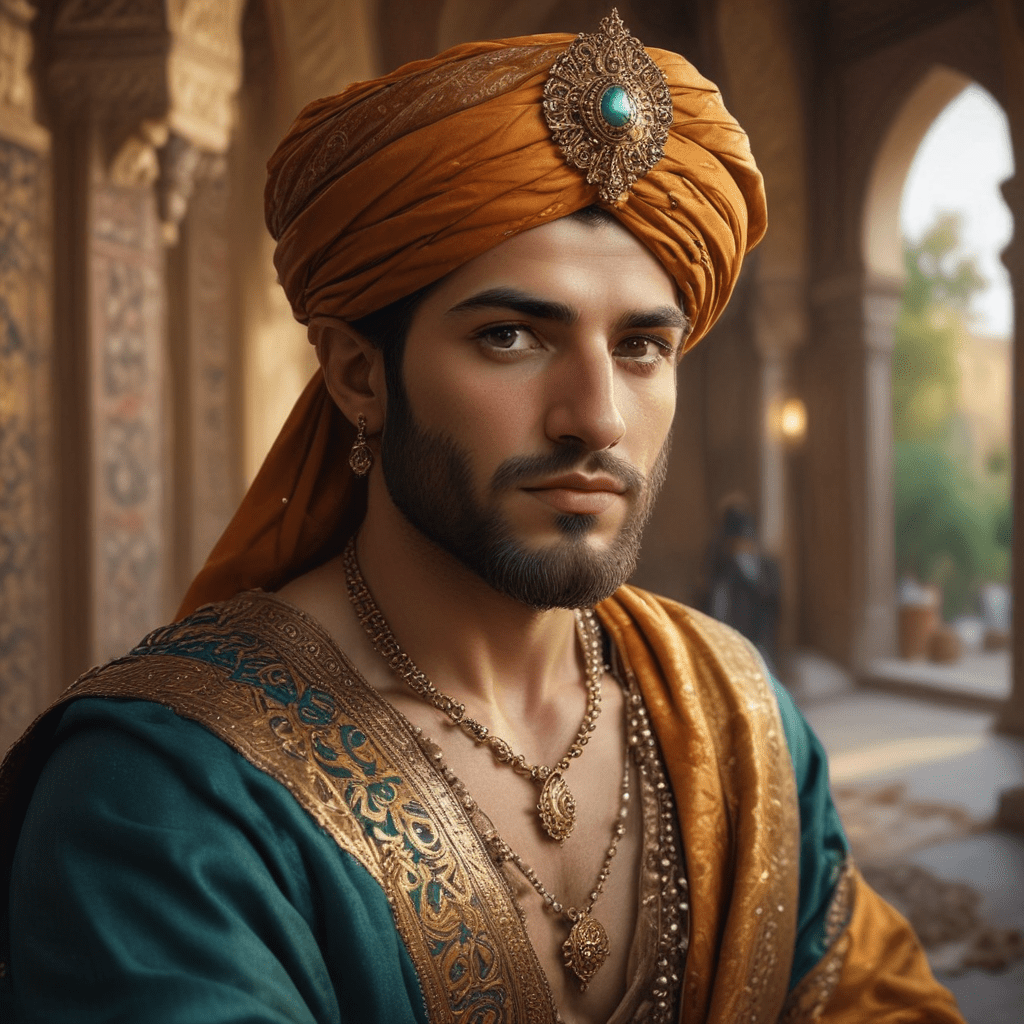The Symbolism of Colors in Persian Mythology
1. Introduction
Persian mythology, woven into the rich tapestry of Iranian culture, boasts a captivating array of stories, legends, and heroes that have enthralled generations. This vibrant world, steeped in symbolism, offers a unique lens through which to explore the human condition and the complexities of the universe. Among the many elements that imbue Persian mythology with meaning and depth, the symbolism of colors stands out as a fascinating area of study. This paper delves into the captivating world of colors, uncovering their hidden meanings and exploring their profound impact on the narrative landscape of Persian mythology.
2. Color Symbolism in Ancient Persia
In ancient Persia, colors were not merely aesthetic elements but rather held deep-rooted associations with various elements and concepts. These associations were shaped by a confluence of factors, including Zoroastrianism, a religion that emphasized the cosmic struggle between light and darkness, and the ancient Persian worldview, which placed great significance on natural elements and celestial bodies. For example, white, associated with the benevolent god Ahura Mazda, symbolized purity, light, and divinity, while black, linked to the malevolent Ahriman, represented darkness, evil, and the underworld.
3. The Role of Colors in Persian Myths and Legends
The use of specific colors in Persian myths and legends plays a crucial role in shaping the narrative and conveying deeper meanings. These colors often serve as visual metaphors, imbuing characters, objects, and events with symbolic significance. Red, for instance, is often associated with passion, courage, and sacrifice, as seen in the heroic figure of Rostam, while green, symbolizing nature, fertility, and paradise, finds expression in the mythical garden of Eram.
4. White: Purity, Light, and Divinity
White, the color of dawn, embodies purity, light, and divinity in Persian mythology. It is closely associated with Ahura Mazda, the benevolent creator god, and the celestial realm. The mythical bird Simurgh, a symbol of wisdom and guidance, is often depicted with white plumage, signifying its connection to the divine. White also represents the righteous path and the pursuit of truth in the face of adversity.
5. Black: Darkness, Evil, and the Underworld
In stark contrast to white, black stands as the antithesis of purity and light. It is primarily associated with Ahriman, the embodiment of evil, and the dark forces that threaten the cosmic order. The fearsome dragon Zohak, with its black scales, represents the destructive power of evil and the chaos it brings to the world. Black also signifies the underworld, a realm of shadows and mystery where the forces of darkness dwell.
6. Red: Passion, Courage, and Sacrifice
Red, the color of fire and blood, pulsates with passion, courage, and sacrifice in Persian mythology. It embodies the fiery spirit of heroes like Rostam, the legendary warrior whose strength and bravery are unmatched. Red also symbolizes the willingness to sacrifice for a greater cause, as seen in the self-immolation of the mythical firebird Huma, a symbol of rebirth and renewal.
7. Green: Nature, Fertility, and Paradise
Green, the color of life and growth, represents nature, fertility, and paradise in Persian mythology. It is associated with Jamshid, the mythical king who brought prosperity and abundance to the land. Green also evokes the lush paradise of Eram, a mythical garden where eternal spring reigns and happiness prevails.
8. Yellow: Royalty, Wisdom, and the Sun
Yellow, the color of gold and the sun, embodies royalty, wisdom, and the celestial realm in Persian mythology. It is associated with Kay Kavus, the wise and benevolent king who sought knowledge and guidance from the Simurgh. Yellow also symbolizes the sun, a source of light and life, and its connection to the divine.
9. Blue: Serenity, Knowledge, and Healing
Blue, the color of the sky and water, represents serenity, knowledge, and healing in Persian mythology. It is associated with the mythical bird Simurgh, whose feathers are said to possess healing properties. Blue also symbolizes the sky, a vast expanse that inspires awe and wonder, and its connection to the infinite.
10. Conclusion
The symbolism of colors in Persian mythology reveals a rich tapestry of meanings that add depth and dimension to the narrative landscape. From the purity of white to the darkness of black, each color carries a unique significance that reflects the complexities of human experience and the eternal struggle between light and darkness. By understanding the symbolism of colors, we gain a deeper appreciation for the enduring legacy of Persian mythology and its timeless wisdom.
Frequently Asked Questions (FAQs)
Q: What are some other important colors in Persian mythology?
A: Other important colors in Persian mythology include orange, which symbolizes wisdom and knowledge, and purple, which represents royalty and luxury.
Q: How has the symbolism of colors in Persian mythology influenced contemporary culture?
A: The symbolism of colors in Persian mythology continues to influence contemporary culture, particularly in art, literature, and design. For example, the use of red to symbolize passion and courage is still prevalent today.
Q: Are there any resources where I can learn more about the symbolism of colors in Persian mythology?
A: Yes, there are many resources available for those who wish to learn more about the symbolism of colors in Persian mythology. These include books, articles, and websites dedicated to this topic.




